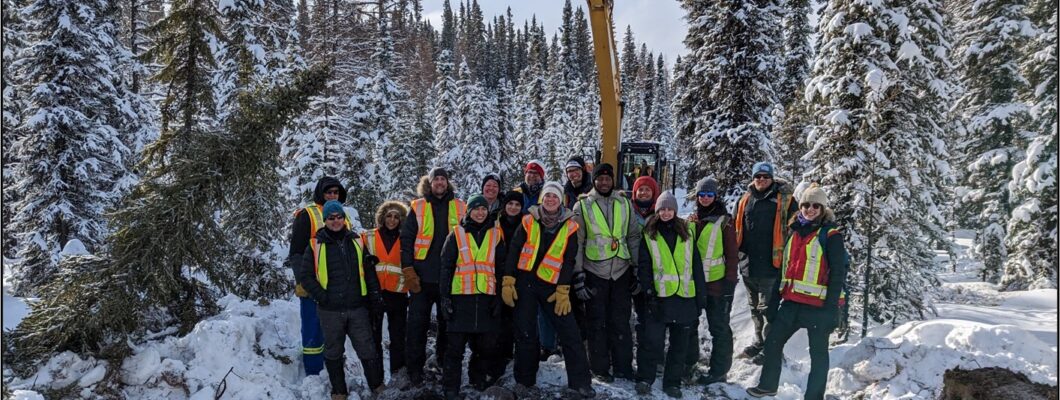Researchers from the Boreal Ecosystem Recovery and Assessment project joined personnel from Alberta Environment and Protected Areas to tour seismic lines being actively restored near the town of Fox Creek, Alberta.
The group was hosted by Westcore Contracting, Inc: the Indigenous-owned earthworks and environmental company that is performing the restoration work.
Seismic-line restoration in boreal landscapes is often a chilly affair, with much of the work taking place during the winter months. The boreal forest is a mosaic of wetlands and uplands, so the heavy equipment used for restoration treatments often requires frozen ground.
This was certainly BERA’s experience. The temperature on the day of our tour was -37C.
It took a while to get the machinery started, but soon enough we were cruising through spectacular winter scenery in warm side-by-sides.
The researcher were there to see how restoration treatments get applied and to learn the perspectives of operators. Mounding (constructing dry microsites in wet terrain), screefing (removing patches of ground vegetation), hinging (tipping live trees over the line), and blocking (building barriers at the entrances or intersections of lines) are things that the researcher had all seen on the landscape before, but most had not witnessed them being installed directly.
The team was overwhelmed by the logistical challenges of moving crews and heavy machinery safely and efficiently through complex and dangerous winter terrain. While the air was cold and the snow deep on the day of the visit, liquid water and soft ground lurked just below the surface in many locations.
Dale Kramer, Westcore co-owner and the team’s host for the day, explained how operators first need to remove the insulating snow from lines in wet ecosites to let the frost penetrate deeply into the ground. Excavators are heavy, and the danger of breaking through the ice in peatlands is real.
The BERA crew also came away impressed by the Westcore operators’ care, transparency, and willingness to engage the research group.
“I live here”, Dale explained. “We want to do this properly”.
The group participated in many lively discussions on the pros and cons of certain restoration techniques. The BERA team was impressed by the effectiveness of line-blocking treatments designed to discourage movement along lines by humans and predators.
Woodland caribou are the primary targets for restoration procedures the Westcore team is carrying out. The area visited by BERA is within the Little Smoky caribou range. Seismic lines provide access and efficient hunting corridors for wolves: woodland caribou’s main predator. Line blocking and stem bending are designed to limit this efficiency.
Restoration treatments are also designed to promote a return to forest cover on lines with limited natural regrowth. In Westcore’s strategy, sometimes that return is very swift.
Hummock transfer is a technique where excavators move entire mounds – often with mature trees directly embedded – straight onto the line from the surrounding peatland. The process is surprisingly efficient, and can establish decades-old trees on the line immediately.
For the most part, though, the winter work is aimed ground preparation for tree planting activities that will take place in the spring and summer seasons. Dale was gracious enough to invite the BERA team back for a repeat visit during warmer weather. The team hopes to take him up on it!
Many thanks to Alberta Environment and Protected Areas for supporting this tour and accompanying the research team. And also to Dale and the rest of his crew at Westcore. The researchers learned a lot!
